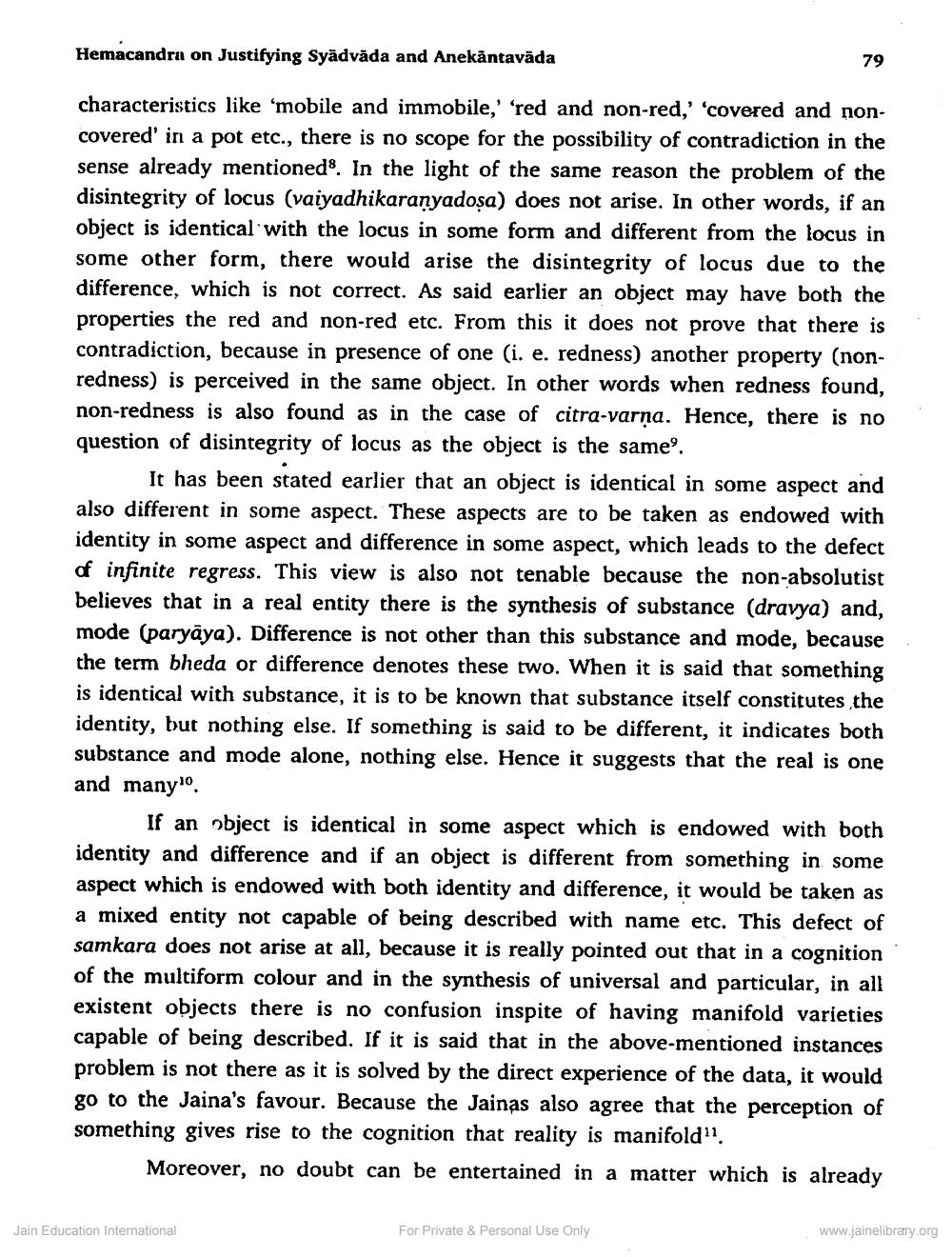________________
Hemacandra on Justifying Syädvăda and Anekāntavāda
79
characteristics like 'mobile and immobile,' 'red and non-red,' 'covered and noncovered in a pot etc., there is no scope for the possibility of contradiction in the sense already mentioned. In the light of the same reason the problem of the disintegrity of locus (vaiyadhikaranyadosa) does not arise. In other words, if an object is identical with the locus in some form and different from the locus in some other form, there would arise the disintegrity of locus due to the difference, which is not correct. As said earlier an object may have both the properties the red and non-red etc. From this it does not prove that there is contradiction, because in presence of one (i. e. redness) another property (nonredness) is perceived in the same object. In other words when redness found, non-redness is also found as in the case of citra-varna. Hence, there is no question of disintegrity of locus as the object is the same.
It has been stated earlier that an object is identical in some aspect and also different in some aspect. These aspects are to be taken as endowed with identity in some aspect and difference in some aspect, which leads to the defect of infinite regress. This view is also not tenable because the non-absolutist believes that in a real entity there is the synthesis of substance (dravya) and, mode (paryaya). Difference is not other than this substance and mode, because the term bheda or difference denotes these two. When it is said that something is identical with substance, it is to be known that substance itself constitutes the identity, but nothing else. If something is said to be different, it indicates both substance and mode alone, nothing else. Hence it suggests that the real is one and many
If an object is identical in some aspect which is endowed with both identity and difference and if an object is different from something in some aspect which is endowed with both identity and difference, it would be taken as a mixed entity not capable of being described with name etc. This defect of samkara does not arise at all, because it is really pointed out that in a cognition of the multiform colour and in the synthesis of universal and particular, in all existent objects there is no confusion inspite of having manifold varieties capable of being described. If it is said that in the above-mentioned instances problem is not there as it is solved by the direct experience of the data, it would go to the Jaina's favour. Because the Jainas also agree that the perception of something gives rise to the cognition that reality is manifold".
Moreover, no doubt can be entertained in a matter which is already
Jain Education International
For Private & Personal Use Only
www.jainelibrary.org




